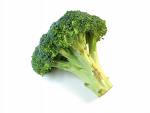 Green beans, aka snap beans or string beans, are pretty easy to grow in the Midwest. They are a very popular warm season vegetable.
Green beans, aka snap beans or string beans, are pretty easy to grow in the Midwest. They are a very popular warm season vegetable.
Types
There are two groups of beans: bush and pole. Bush beans grow as a bush and require no support while pole beans need a framework to hold them up. We have had great luck with Blue Lake 274 bush beans. They take 58 days to harvest and are plump with good yield. Also, they are bean mosaic resistant.
A good pole bean is Blue Lake which takes 65 days to harvest and are stringless.
Planting
Plant after the last frost (May 15th in Peoria area) has subsided. We have always grown beans from a seed which you can get in packets from a nearby supply store. Space out planting 2 weeks so a plentiful supply is available through August. Do not plant beans in the same spot as last year since disease and/or pests may have wintered over. It is best to get new bean seeds every year.
Depth
Beans are planted at a depth of 1 inch. Bush beans are spaced out 4 inches between beans and 18 to 24 inches between rows. Pole beans are planted 6 inches apart in rows of 30 inches. Water after planting. Do not soak beans in water before planting as they tend to crack.
Care
Beans have a shallow root system so cultivating nearby with a hoe can damage them. We recommend hand-picking weeds within 1 foot of the plant after a rain if possible. We have had good luck mulching bean plants as it keeps the ground at a more stable temperature and holds moisture in.
Fertilizer
Since beans are legumes, they require no additional nitrogen. A 0-10-10 fertilizer will work well but can be hard to find.
Harvest
Pick beans after they are thoroughly dried (i.e. do not pick in the morning). The beans should be plump and long. Bean plants are brittle and easy to break so be careful. You can use a small scissors and snip the bean off or carefully yank on it. The plants will continue to generate new beans after they are harvested. We usually get 3 or 4 pickings in a season.
Toss the beans in a plastic bucket as they are harvested. Store unwashed until ready for use. Remember, the best tasting beans are immature ones; that is they do not have full seeds in them. The longer they linger on the plant, the tougher they become.
Problems
Bean mosaic disease turns leaves yellow and reduces yield.
Bacterial bean blight causes bright yellow or brown spots on the leaves. Avoid contact with wet plants and use disease-free seeds.
Storage
Beans can be stored, unwashed, for up to 3 days in a plastic bag in the vegetable crisper part of the refrigerator. The bag prevents moisture loss and wilting. Green beans are excellent candidates for canning. We have canned them nearly every year. Beans dated 2004 are still being used in our soups or casseroles. Before freezing, the beans need to be blanched.
Doug
